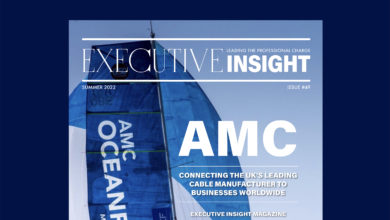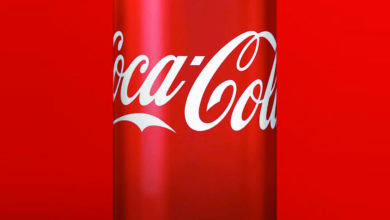Doing business, whatever the level, is a competitive and challenging undertaking – this is stating the obvious. When the business in question is a national market leader in its field as Gyproc Ireland is, the demands that come with holding your place at the top of the pyramid amplify these challenges ten-fold. And when, yet again, your market-leading business happens to be a subsidiary of a company like Saint Gobain, a prestigious multinational with a global reach spanning every continent, the bar is set even higher still.
What is there to say? Quite simply, Gyproc Ireland is the first name in its field, and an important European component of Saint Gobain’s Construction Products division – a world-leading business operation that, thanks to its unique portfolio of products and services, boasts a 46,000 workforce and a 62-country footprint. Gyproc provides innovative, cost-effective and reliable products that meet the demands of the construction industry. Having first opened its doors for business in 1936, Gyproc has been manufacturing in Ireland for over 80 years and is the market leader in plaster, plasterboard and drylining systems, providing innovative and sustainable design solutions.
With this in mind, the company has naturally been involved with many of the biggest and most prestigious commercial building projects in Ireland, including The Google Building, The National Convention Centre, 3 Arena, The Aviva Stadium, and the landmark, Terminal Two at Dublin Airport. The company will continue to lead the way in terms of innovation and the ability to provide sustainable design solutions for the buildings of the future. Not that Gyproc is resting easy, however – as the old saying goes, getting to the top is the easy bit, staying there is an altogether more difficult matter. Another important factor is the use of recycled material within their manufacturing process. Working with a leading supplier who installed world class recycling equipment has significantly reduced their waste and increased efficiency.
Gyproc’s long-running success and market leadership is built upon the stable foundations of internal operational excellence. Gyproc Ireland’s Supply Chain department is an authority on this, and over the course of seven years has directly led the ever-evolving changes in strategy that have taken place inside the business to ensure that operations remain fine-tuned. Most recently, such changes have been as a result of the implementation of the company’s STREAMLINE initiative.
“STREAMLINE is an internal construction products initiative programme focused on Supply Chain process improvements, measured in working capital improvement and customer experience improvement across 31 countries,” explained a company spokesman.
“We focused from the start on the customer experience – we already had strong working capital performance due to good practices but also on our inherent warehousing constraints. STREAMLINE addresses our product portfolio – rationalisation and focus, customer service offering – defining what exactly is your SLA, Sales forecasting – a key part of the S&OP process, manufacturing efficiencies – for example Production Schedule Adherence, rapid system update, and Supply Chain efficiencies, which centres around supply plans and improving warehouse efficiencies. All of this leads to great improvements in the customer experience.
All of the hard work from the team has paid off – we won the Best Improver award out of all 31 countries. It’s been a good few years. This year, the major focus has been on SAP/system efficiency improvements; this will allow our teams to do more, much more efficiently, improving their work experience and ultimately, leading to an improved service level for Gyproc customers.”
Gyproc’s engine room, so to speak, is its manufacturing facility in Kingscourt, County Cavan, a site that has been in continuous operation for more than eighty years, providing sustainable long-term employment locally to over 200 employees. It is from here that Gyproc provides quality wall-board and performance board, and bagged plasters to the construction industry in Ireland. By adopting the principles of WCM (world-class manufacturing), a series of concepts and techniques that ensure manufacturing is lean, cost-effective, efficient, and flexible, Gyproc can maintain a competitive edge over industry rivals.
“We use world-class manufacturing, we are a world-class manufacturing site. What does that mean on a day-to-day level within Supply Chain? It’s about helping the team to reduce hours, warehouse organisation, efficiencies, simplicity, breaking things down. It’s about putting the right foundations in place. Streamlining is a big part of this. Last year, it was really about not trying to put in unnecessary solutions UNLESS when you’ve already got the basics done properly.”
World-class manufacturing is a philosophy first developed by Japanese manufacturing that, through the implementation of techniques such as ‘make-to-order, streamlined flow, collection of parts, doing it right first time, quick replacement, zero defects, cross-functional teams with multi-skilled employees, and statistical process control, among other things, will increase operational efficiency and reduce wastage exponentially. As a result of Gyproc’s adoption of WCM, the company is capable of impressively high productivity levels, not only in quantitative terms but also qualitatively.
Of course, such robust control techniques are but part of the story. The key drivers of WCM are quality, cost-effectiveness, flexibility, efficiency, and innovation, but safety also plays an integral role in ensuring operational excellence.
“Saint Gobain takes the criticality of safety as the number one priority. The importance of safety in our operations cannot be overstated. In the last two years, the bulk of capex spend within Supply Chain has been focused on safety improvement projects which can be broken into two categories: Firstly, risk reduction through pedestrian and vehicle segregation – this is the greatest source of safety risk on site. We delivered a project in 2017 with a 24,000 risk points reduction through designing and implementing a yard segregation plan with barriers, gates and electronic barriers. Secondly, we have delivered a number of 5S projects under our WCM programme – this has covered all of our warehouses and has safety as the number one focus, but then focuses on optimised use of warehouse space to improve use of space and also to improve the efficiency of put-away and picking/loading activities.
Looking to 2019 and beyond, we have capex approval for phase one of a strategic site development plan, which will provide a sustainable and scalable site inventory and logistics movement strategy.
This will deliver demarcation between customer focused logistics – sometimes called forward logistics – and our raw materials and manufacturing activities, giving us safety, space utilisation, material handling, material accuracy, warehousing and loading efficiency, and cost improvements.”
Understandably, Gyproc is largely buoyant about what the future holds. The Supply Chain is strong and increasingly fine-tuned from the inside-out as a result of the initiatives that are being deployed, to the extent that operational efficiency continues to improve. The opening of a national distribution centre capable of servicing all of Ireland with a next-day delivery service for full loads anywhere in the country, and a two-day delivery service for half loads anywhere in Ireland as well, north or south, was a game-changer. Business is recovering well, and Gyproc continues to go from strength-to-strength, and yet there are potential storm clouds on the horizon that are causing anxiety to not only Gyproc but the entire business world in Ireland, the UK, and Europe at large.
Bearing mind that roughly 80% of Gyproc’s business is with customers from the south of Ireland, the outcome of the UK’s Brexit negotiations with the EU are at the front of the company’s mind. On this, Gyproc’s spokesman said: “We need to look at potential solutions for our customers in the north of Ireland. Potentially in a no deal situation you could be looking at us having to do warehousing in the north of Ireland to ensure that our customer’s needs are met. That’s the worst-case scenario.
Our worst-case scenario in relation to a no deal on our incoming raw materials would be our suppliers having to warehouse in the south of Ireland, and who would pay for that eventually? We would – we’ll have to pay the bill for the warehouse.
In a no deal situation we would potentially be facing significant disruption, or more likely significant cost around stocking. It’s still hard to imagine a no deal but the prospect has certainly become more likely in the last few months.”
The outcome of Brexit will have a significant impact on Gyproc’s fortunes over the year to come, but not an existential one. This aside, the company is in rude health and with the backing and resources available from its parent company, Saint Gobain, the means are in place to ensure that the company will not merely hold its place as market but thrive. A worst-case Brexit outcome might mean that, in the short-term, Gyproc has an uncomfortable year or two but over the medium to long-term its commitment to achieving the highest standards of quality, innovation, and operational efficiency means that the company will remain market leader for the foreseeable future. After all, form is temporary, but class is permanent.



